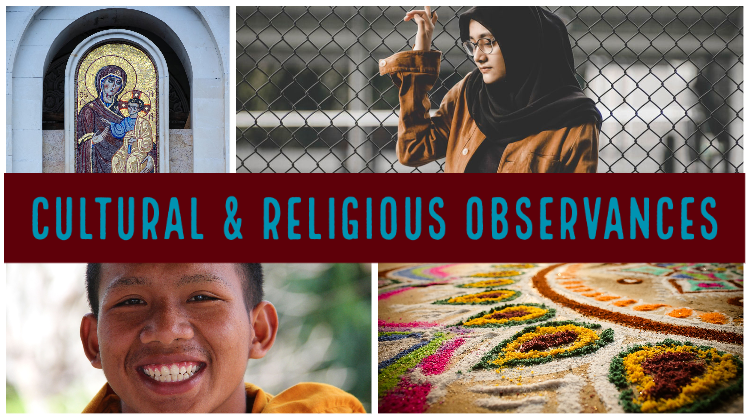National Native American Indian Heritage Month
Culture/religion: National observance
Date: November
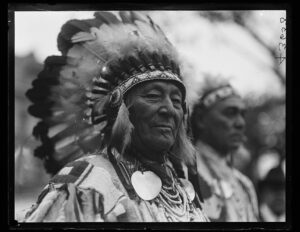
Native American Heritage Month has evolved from a week-long celebration when president Ronald Reagan proclaimed November 23-30 as “American Indian Week” to a month-long celebration in 1990 when president George H.W. Bush issued a proclamation designating the month of November as National American Indian Heritage Month.
National Native American Indian Month celebrates and recognizes the accomplishments of the peoples who were the original inhabitants, explorers and settlers of the United States.
Sources:
NativeAmericanHeritageMonth.gov
Native American Heritage Month, PBS
National American Indian Heritage Month, Library of Congress
All Saints Day
Culture/religion: Christianity
Date: November 1
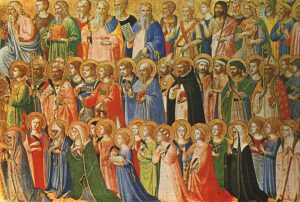
All Saints Day is a celebration honoring all the saints from Christian history. This celebration comes from the belief of a spiritual connection between those in Heaven and on Earth.
In the early years, the Roman Empire persecuted Christians, so the Church set aside a special day to honor those martyrs who died for their faith. Because there were too many to recognize individually, they were combined into one day of recognition.
Sources:
All Saints’ Day, November 1 – Meaning and History, Christianity.com
Samhain
Culture/religion: Pagan/Wiccan
Date: November 1
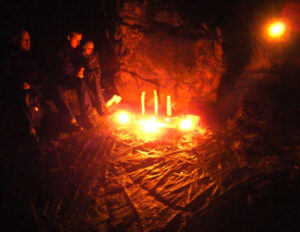
Samhain is a Gaelic festival marking the end of the harvest season and the beginning of winter. It occurs about halfway between the autumn equinox and the winter solstice.
In ancient times, Samhain was the most important of the four quarterly fire festivals. Hearth fires in the family home where left to burn out while harvest was gathered. Cattle were sacrificed and participants took a flame from the communal bonfire back to relight their hearth fires.
Samhain is considered an important precursor to Halloween, as it is a time when the world of the gods was believed to be made visible to humankind. The gods played many tricks on their mortal worshipers and was time filled with danger, fear and supernatural episodes.
Samhain begins at sundown on October 31.
Alternate spellings:
Samain
Pronunciation:
sow-win
Sources:
Samhain, Encyclopedia Britannica;
Samhain, Wikipedia;
Samhain, History.com
Día De Los Muertos (Day of the Dead)
Culture/religion: Mexican heritage
Date: November 1-2
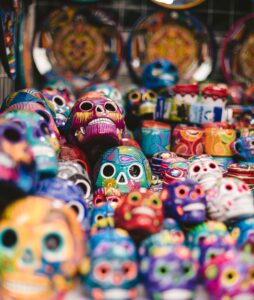 Día de los Muertos is a two-day celebration where it is believed that the passageway between the real world and the spirit world is open so our deceased loved ones can come back to visit us. It began as a mixture of the Aztec festival dedicated to the goddess Mictecacihuatl (“lady of the dead”), with a Catholic influence.
Día de los Muertos is a two-day celebration where it is believed that the passageway between the real world and the spirit world is open so our deceased loved ones can come back to visit us. It began as a mixture of the Aztec festival dedicated to the goddess Mictecacihuatl (“lady of the dead”), with a Catholic influence.
Día de los Muertos is celebrated on November 1st and 2nd. Tradition holds that children who have passed come back to visit on November 1st and the adults who have passed return for the festivities on November 2nd. The deceased loved one’s favorite meal and drink is prepared, and there is singing and dancing before they go back to the underworld for another year.
The celebration is not a time for mourning, but rather a time for a reflective and lively event honoring the deceased. Flowers, food, altars and music are all integral parts of the holiday.
Sources:
Day of the Dead History, DayOfTheDead.holiday
All Souls Day
Culture/religion: Christianity
Date: November 2
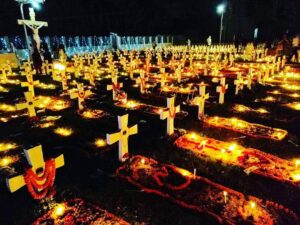
All Souls Day is a day honoring the dead, celebrated in the Catholic Church, the Eastern Orthodox Church and a few other Christian denominations.
Catholics believe the soul of a person who dies can go to one of three places: heaven, hell or purgatory. All Souls Day honors those in purgatory being cleansed of their venial sins and being made pure before entering heaven.
Prayers, almsgiving, lighting candles and attending Mass are some of the traditional ways the day is observed.
Alternate names:
The Commemoration of All the Faithful Departed (Roman Catholic Church)
Feast of All Souls
Día de los Muertos
Sources:
All Souls’ Day, Catholic Online
All Souls Day and Why Catholics Celebrate It, Learn Religions

